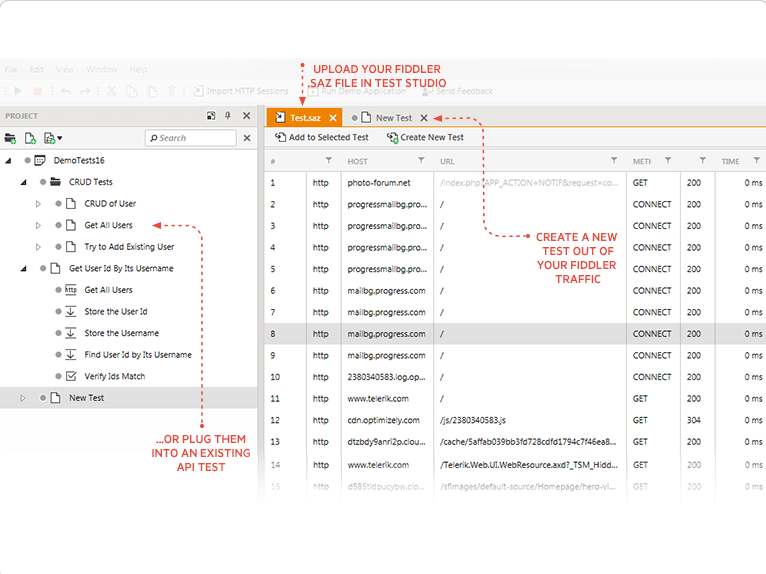What Is an API and How Does It Work? Definition and Features

API is a mechanism that helps internal software to easily communicate with external services to enhance users’ experience.
Nowadays, developers do not dedicate time to writing new code when integrating a new service into their projects—they use APIs.
What Is an API?
API, which means “Application Programming Interface,” is a mechanism that helps internal software to easily communicate with external services to enhance users’ experience. It’s a protocol that facilitates data transmission from one software to another with definitions, contracts or documentation to guide its functionality.
Developers use APIs to simplify the complexity of app development, manage code, and save time and money. APIs also offer security since they only communicate necessary information at a particular time, thereby preventing the servers from total exposure to the web.
How Does an API Work?
Developers can use APIs as gateways to other applications without needing to monitor their implementation. You can trace the intricacies that guide the functionality of APIs to something like documentation between two applications. This protocol details how each application will behave to ensure optimum performance when assessed by end users.
APIs are intermediaries to many services—they go into action when a user requests an application. The application will now reach out to the external application server through the API to provide the services for the user. For example, a website built for booking tickets can also present the opportunity to book a hotel reservation and know the weather forecast. The website is primarily known for booking airline tickets, but with APIs it can improve your experiences by presenting a platform to access related services.
Features of an API
API integration into software development comes with the ease of not having to write code from scratch and reusability for the developer. However, there are certain qualities to look out for in every API you want to integrate into your product.
Simplicity
Developers use APIs because they do not want to go through the hassle of coding. The ideal APIs for integration should be easy to use and maintain. They should need less technical know-how and training to understand how their implementation works.
Flexibility
Since developers do not want to go through the stress of writing code for a particular service, an ideal API will also need to support reusability. Developers should be able to use an API for many possible related projects.
Scalability
APIs should be able to adjust any amount of requests or loads without crashing.
Security
Quality APIs should be able to secure the data it transports on the web and prevent server exposure while functioning as an intermediary.
Speed
An ideal API responds to calls with optimum speed, no matter the number of requests. It also maintains a quality user experience.
What Is an API Call?
API is a means of interaction between two servers to provide a service. This interaction happens through a request, which is the API call. The request is sent to the server by the user to provide certain information, which can be user data in a particular social media. An API call can happen in five processes, comprising finding the URL of the application, formulating a request by adding an HTTP verb, including a header, including API keys and waiting for the request.
What Is API Integration?
API integration means that two servers with APIs can communicate and exchange data to enhance the quality of their services on each end. It allows seamless communication between these two applications while ensuring that no single bit of data falls off during transmission.
With the current prevalence of cloud-based products, you need API integration to ensure interconnection between applications that offer related services. It is to facilitate seamless updates, availability of data and delivery of services. To achieve API integration, developers can apply custom integrations, connector software or employ SaaS platforms.
What Is an API Endpoint?
An API endpoint is an intermediary receiver of the sender’s request. After the API endpoint receives the request, it validates and transmits it to the server that contains the resources. The cycle is complete when the endpoint responds to the user with the data which they requested. This process takes a few minutes to complete, depending on the volume of data requested.
An example of an API endpoint is the Twitter lookup API, which helps users know the detailed content of a specific tweet, including its availability. Another is the YouTube API, which makes it seamless to embed YouTube videos on other platforms.
Why Is API Integration Important?
In the past, services on the web were applied and integrated by writing a series of code from scratch. It was daunting and had errors that led to a series of failures. However, with APIs, many processes can be accessed efficiently and executed in less time because developers can integrate already-made applications and delegate roles to them.
APIs ensure optimum performance level and reliability despite the amount of loading and requests happening in a moment. They are necessary since they provide a layer of security that prevents users from communicating directly with a particular database. With APIs, many platforms on the internet ecosystem interconnect to enhance user experiences. Reduction of cost for business and an easy automation process are also a guarantee during testing compared to manual methods.
Types of API
There are four main types of APIs. They include the public, partner, composite and internal APIs.
Public APIs
Public or open APIs come at no cost. They are publicly available and accessible by developers at any time.
Partner APIs
Partner APIs allow developers to access them after they have the requirements or attained some rights. Examples of partner APIs are Amazon, Twitter, LinkedIn API, etc.
Composite API
This API handles API calls simultaneously to facilitate quick response time during processes.
Internal API
Internal or private APIs only operate internally in an organization to provide a response or access to sensitive information.
Other types of APIs are known as web service APIs. They use URLs to provide services to users. They include SOAP, REST, XML-RPC and JSON-RPC APIs.
SOAP vs. REST APIs
SOAP (Simple Object Access Protocol) and REST (Representational State Transfer) APIs are the most common web service APIs. They also have some similarities in using the same HTTP protocol. However, there are a few differences:
While SOAP has rigid standards contributing to its strong security, REST is flexible and allows developers to make changes. Furthermore, SOAP is a functional API, whereas REST is an API driven by data. It is crucial to note that while SOAP might need high bandwidth to perform, REST does not as it requires minimal service delivery.
API Testing Tools
Since APIs are widespread on the web and cloud, several threats and vulnerabilities are also bound to be associated with them. Hence, developers must examine the performance, reliability and security of their API with testing tools. With these tools, you can automate scenarios where APIs will process requests to see how they would respond in real-time. Some testing tools prioritize the security of the API by scanning for vulnerabilities and providing quick fixes.

The best tools for API testing come with a straightforward user interface for easy navigation and can run various tests simultaneously. Some of the best API testing tools include:
Postman
- No user barrier; all levels of users can operate this tool
- Supports all OS, including macOS, Linux and windows
- Fantastic retention capacity of designs on similar projects
Test Studio
- Easy to maintain
- Fast turnaround time for results
- Automated low-code approach to test RESTful APIs
- Ability to integrate API tests into your software development ecosystem
Soap UI
- Dedicated tool for SOAP, REST and GraphQL APIs
- Supports simulation in the most complex scenario
- Great tool for automated loading tests
We covered these tools and others in our best API Testing Tools piece.
Concluding Thoughts
APIs are rapidly changing the way businesses communicate and interact with other systems. Having a working knowledge of APIs can give you a competitive advantage in the business world, allowing for more efficient communication between software solutions, faster integration of applications, and more.

John Iwuozor
John Iwuozor is a freelance writer for cybersecurity and B2B SaaS brands. He has written for a host of top brands, the likes of ForbesAdvisor, Technologyadvice and Tripwire, among others. He’s an avid chess player and loves exploring new domains.

